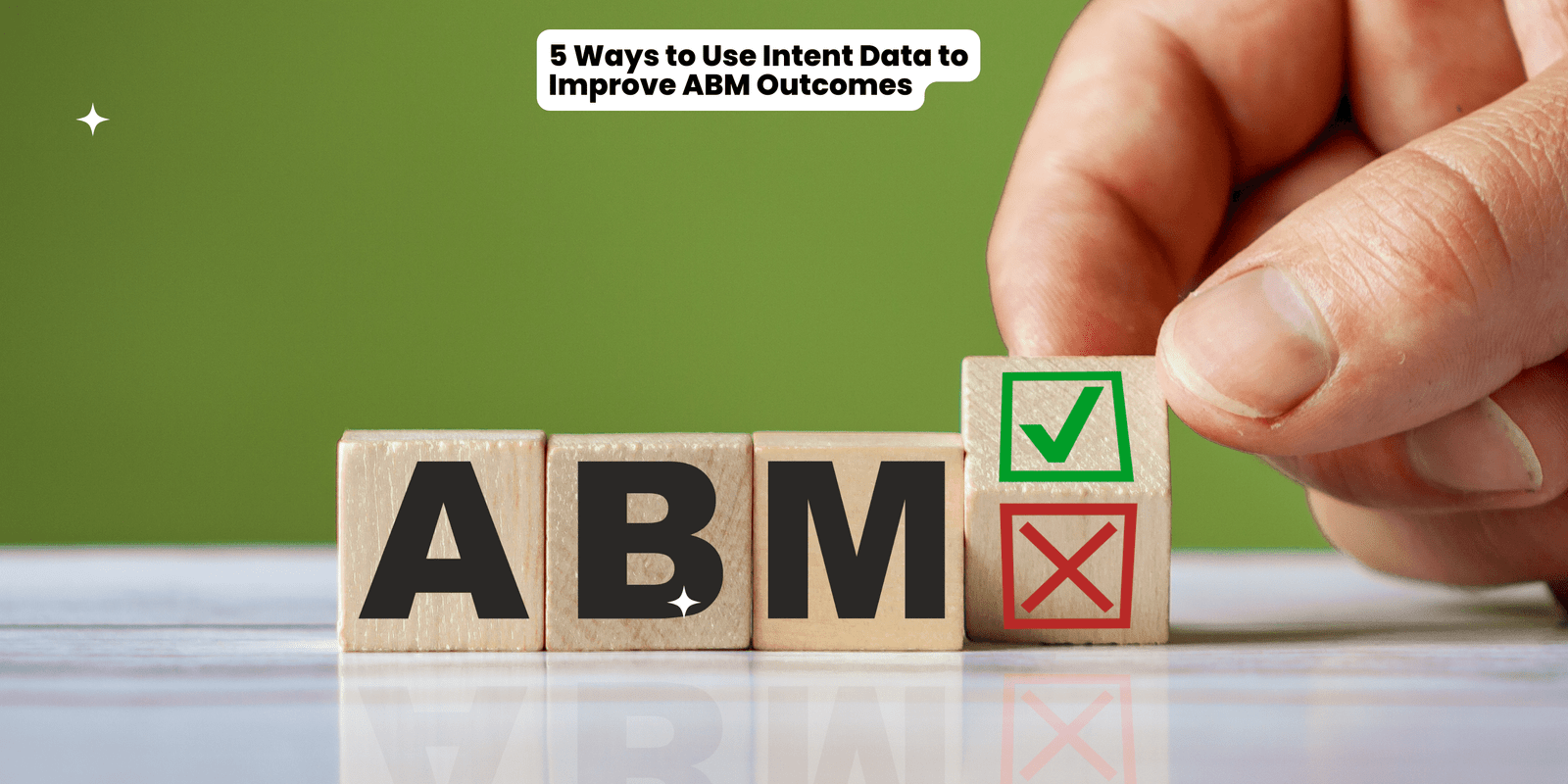
In today’s competitive B2B tech field, simply generating leads isn’t enough. Businesses are turning to targeted strategies like account-based marketing (ABM) to cultivate deeper relationships with high-value accounts. Partnering with an account-based marketing agency can be instrumental in crafting a winning ABM strategy, but success hinges on one key element: understanding your target audience’s buying intent.
This is where intent data comes into play. By analyzing online behavior, intent data helps you identify companies actively researching solutions related to your offerings. This allows you to tailor your account-based marketing tactics efforts to resonate with decision-makers at the right time in their buying journey. Here are five powerful ways to leverage intent data and significantly improve your ABM outcomes:
1. Identify High-Value Accounts Early in the Buying Cycle
Traditionally, ABM relies on identifying target accounts and nurturing leads within those accounts. But valuable insights often slip through the cracks. Potential customers might be researching your industry or competitor solutions before even visiting your website. Intent data bridges this gap by revealing which companies are actively consuming content related to your niche.
By analyzing search queries, website visits, and online engagement with industry publications, intent data platforms can pinpoint companies exhibiting purchase intent. This allows you to proactively reach out to these high-value accounts before they become aware of your competitors. Early engagement fosters stronger relationships and positions your company as a thought leader in their buying journey.
2. Prioritize Accounts Based on Buying Stage and Intent Strength
Not all leads within your target accounts are created equal. Intent data helps you segment these leads based on their buying stage and level of purchase intent. This allows you to prioritize accounts that are actively researching solutions you offer.
For instance, companies downloading white papers about specific industry challenges might be further along in the buying journey compared to those simply browsing general industry trends. By segmenting leads based on intent strength, you can allocate resources effectively. High-intent leads warrant more personalized outreach, such as targeted ad campaigns or direct contact with decision-makers.
3. Craft Hyper-Personalized Content that Resonates
Generic marketing messages are unlikely to resonate with today’s sophisticated B2B buyers. Understanding your target audience’s pain points and content consumption habits is crucial for crafting compelling messaging. Here’s where intent data shines.
By analyzing the type of content high-intent accounts are consuming, you gain valuable insights into their specific challenges and areas of interest. This allows you to develop targeted content assets, such as case studies, blog posts, or webinars, that directly address their needs. Personalized content fosters deeper engagement and positions your company as a trusted advisor, accelerating the sales cycle.
4. Optimize Your Content Syndication Strategy for Maximum Reach
Content syndication services can be a powerful tool for expanding your reach and attracting high-value accounts. However, simply placing content across random websites might not yield optimal results. Intent data allows you to identify the publications and online platforms frequented by your target audience.
By leveraging intent data, you can strategically partner with content syndication solutions that cater to your target accounts’ preferred online sources. This ensures your content reaches the right decision-makers at the right time, maximizing the impact of your ABM campaigns.
5. Refine Your Targeting and Messaging Based on Ongoing Engagement
ABM is an iterative process. Simply launching a campaign and hoping for conversions isn’t enough. Continuously analyzing data is crucial for optimizing your efforts. Here’s where intent data proves its worth once again.
By monitoring account activity post-campaign launch, you can identify which messages and content formats resonate most with your target audience. For example, if a specific account downloads multiple white papers on a particular topic, it’s a strong indicator of their interest. This ongoing analysis allows you to refine your targeting parameters and tailor your messaging to maximize engagement with the right accounts.
Conclusion

Incorporating intent data into your account-based marketing strategy empowers you to identify high-value accounts earlier, personalize messaging effectively, and optimize content syndication for maximum reach. By understanding your target audience’s buying intent, you can develop a data-driven approach to ABM, ultimately resulting in stronger relationships, improved conversion rates, and a significant boost to your bottom line.
Contact us today at info@B2BTechintent.com to learn more about how we can help you in using the intent data to improve ABM outcomes.
Stay ahead in a rapidly world. Subscribe to Prysm Insights,our monthly look at the critical issues facing global business.





